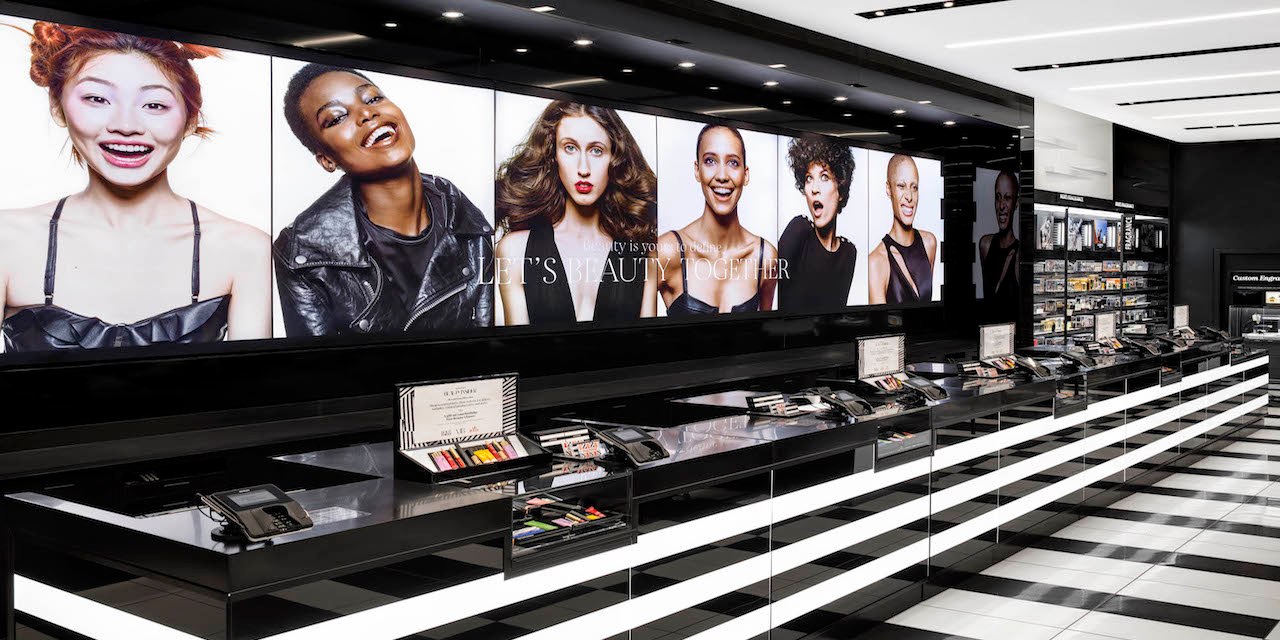Retailers are exiting malls — and changing their store strategies

Retailers are opening more stores in strip malls or open-air shopping centers — and they’re rethinking what these locations should look like.
Locations of Macy’s new off-mall chain, Market by Macy’s, for example run only 20,000 square feet, tens of thousands of feet smaller than the typical department store. The second location of this new chain opened in Texas last week, and carries carry a smaller selection of the companies’ top-performing brands like Ralph Lauren and Levi’s — as well as some of Macy’s private label brands. There’s also a dedicated section for people to make returns and pickup buy online, pickup in-store orders.
As other retailers like Sephora and Foot Locker are looking at opening more off-mall locations, they’re following similar playbook as Macy’s: The off-mall stores are smaller and offer fewer products and services, albeit ones that are catered more towards customers in that particular neighborhood. In these locations, retailers are trying to attract more regular customers, who are less interested in browsing the store and instead want to get in and out as quickly as possible.
Retailers have been in the process of opening more off-mall stores for the past couple of years — Macy’s for example, opened its first Market by Macy’s location last February, also in Texas. But the coronavirus pandemic has accelerated the trend. “Our team continues to work our portfolio really hard to [identify times] and places to pivot out of malls,” Foot Locker CEO Richard Johnson said during a company earnings call in September. Sephora had previously said it intended to open roughly 100 off-mall stores in 2020, though the pandemic put some of those new store openings on hold.
After non-essential retailers were allowed to reopen in the spring, some states like Wisconsin and New York allowed retailers to open stores in open-air centers ahead of stores in enclosed malls. And, services like curbside pickup were easier to offer at strip malls or open-air shopping centers, where all the stores are located right next to the parking lots.
Rebekah Kondrat, founder of consultancy Kondrat Retail, said that she is increasingly seeing retailers looking to open more stores in what she calls “community centers,” citing the Domain shopping center in Austin, Texas as one example. These community centers are open-air shopping centers that are laid out in a format similar to a strip mall, but have a grocery store, restaurants and perhaps a gym. All of these are attractions that, in pre-coronavirus times, may draw people there a few times a week.
“I think there is a really big opportunity as retailers and brands are opening [stores] in more of these community centers to build lasting relationships with customers,” said Kondrat. “It’s a very different animal than like a Macy’s Herald Square, where you have predominantly tourists or one-off traffic.”
Ad position: web_incontent_pos1
Foot Locker is an example of one such location that’s tried to take a more localized approach in its new off mall stores. For the past couple of years, the footwear retailer has centered its new store strategy on opening more of what it calls “Power Stores,” which are meant to double as community centers. Foot Locker’s Power Stores include an event space, are decorated with the work of local artists and might feature a few localized products, like sneakers featuring the color scheme of local sports teams.
Foot Locker opened these stores more slowly in 2020 due to the coronavirus — the retailer only opened three Power Stores in 2020 after opening six in 2019 — but the company has previously said it plans to open 20 of these locations.
Tiffany Hogan principal analyst for beauty and apparel at Kantar Consulting, said she saw more retailers experiment with opening off-mall pop-ups over the holidays, citing apparel retailer Express as one such example. Express opened a pop-up in Ohio over the holidays called “The Express Edit” featuring a slimmed down assortment of apparel, mostly focusing on denim, jackets and holiday apparel. The store also carried some items from local Ohio business and artists. Express CEO Tim Baxter told a local news outlet that the company wasn’t planning on opening any more off-mall stores yet outside of the one pop-up.
As more retailers look to open more off-mall locations, there could be more competition to snag a lease in the most desirable strip malls, Hogan said. Two retailers who have previously made off-mall key to their expansion strategy– Ulta Beauty and Sephora — have also recently announced deals to open more shop-in-shops within Target and Kohl’s respectively.
Both Target and Kohl’s stores are predominantly located outside of malls, and Ulta Beauty and Sephora striking deals with those two retailers, “kind of shows you that that was their easiest route to expand quickly,” said Hogan. As such, striking more partnerships with off-mall retailers could be another way for retailers to exit the mall.
Ad position: web_incontent_pos2

